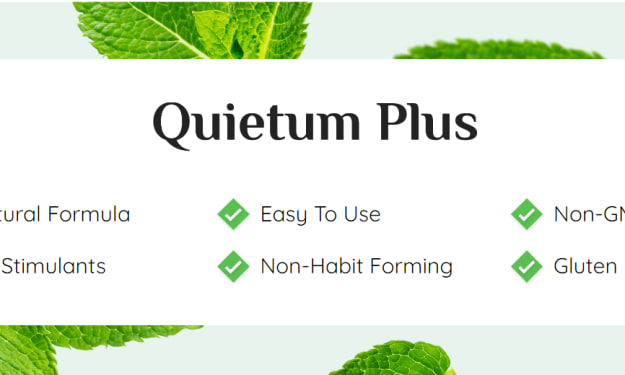Yoga for Chronic Pain Relief: A Complete Guide to Pain Reduction
Yoga, an ancient Indian philosophy-based practice, fosters a profound mind-body connection that improves total well-being, providing more benefits than just physical comfort.

Recognizing Chronic Pain and Yoga's Power
Chronic pain frequently threads a persistent thread across existence, touching numerous lives with its relentless grip. Regaining the vivid hues of health and wellbeing begins with understanding chronic pain. Back pain, rheumatoid arthritis, migraines, and other complex ailments are examples of chronic pain, which is a condition that lasts longer than the typical healing period. About one in five people worldwide experience it as a deafening roar or a silent whisper, greatly affecting their quality of life.
Types of Chronic Pain and Their Effects:
Every kind of chronic pain has a unique history and set of difficulties, ranging from the sharp throb of migraines to the dull aching of arthritis. All of them have a significant negative influence on a person's day-to-day functioning, which frequently results in decreased mobility, psychological tension, and a lowered sense of wellbeing.
Mind-Body Link:
There is no denying the mind-body link in chronic pain. Anxiety and stress can make pain seem worse, which can lead to a vicious cycle that is difficult to escape. In this context, yoga shows up as a ray of hope. Yoga treats pain on both a physical and emotional level because of its comprehensive approach. In addition to strengthening and stretching the body, it calms the mind and promotes awareness and relaxation.
The Use of Yoga in Pain Relief:
Yoga is a long-standing Indian discipline that has become well-known throughout the world for its holistic approach to wellness as well as its benefits as a physical workout. Yoga is a potent therapy for managing chronic pain because it increases flexibility, lowers tension, and fosters a general sense of balance. There are several first-hand accounts of people finding relief from their constant agony as a result of yoga's soft poses and contemplative breathing techniques.
With the help of yoga, we can not only survive but also thrive in the complicated world of chronic pain management. It encourages communication between the mind and body, resulting in a more profound comprehension and a more harmonious way of living. Together, let's embrace the journey to wellbeing by stepping onto the mat and taking deep breaths. One posture at a time, your tale of solace and renewal is waiting for you.
How to Begin Yoga for Chronic Pain Relief
For individuals caught in the maze of chronic pain, taking up yoga might be a ray of hope. For those who are just starting out, the process begins with comprehension and cautious exploration. For beginners, especially those who are in pain, yoga is more about growth and personal comfort than it is about perfection.
Starting Your Adventure:
Choose the Correct Teacher: Seek out teachers or studios that specialise in beginning yoga or chronic pain management. Additionally, there are a ton of websites that offer mild yoga sessions with adjustments for various health issues.
Gentle Yoga Pose: Begin with poses such as Child's Pose, Mountain Pose, and Cat-Cow. These fundamental motions are easy to adjust and kind to the body. For example, chair yoga is an excellent choice for people who have severe pain or limited mobility.
Modifications: Keep in mind that each body is distinct. To make positions more comfortable and approachable, use props like blocks, straps, and pillows. Never be afraid to change a stance to fit your needs.
Handling Fears and Concerns:
It's common to be nervous about beginning a yoga practice when dealing with chronic pain. But keep in mind the advice of a well-known Indian yoga teacher: "Yoga is about what you learn on the way down, not about touching your toes." Yoga is a personal practice, and the language of the body is listening to itself. Acknowledge your limitations and acknowledge minor accomplishments.
Start the path to a more comfortable life right now. Look for an online course or starting yoga class that focuses on managing chronic pain. Accept the soft stretches, peaceful inhalations, and silent power that accompany each posture. Recall that every trip begins with a single step, and your route to well-being and relief is just ahead. Get your yoga on.
Strong Yoga Pose for Relieving Chronic Pain
A constant companion for many, chronic pain can be quiet or loud in different areas of the body. With all of its positions, yoga provides a haven for people who are in pain. Now let's explore some potent postures designed to address particular types of pain, such as joint, neck, and back discomfort.
Yoga for Back discomfort:
Child's Pose (Balasana): This mild forward bend eases lower back discomfort by stretching the spine and calming the mind. Put a pillow or bolster beneath your torso for extra support.
Cobra Pose (Bhujangasana):Bhujangasana, also known as Cobra Pose, is a mild backbend that helps to lengthen the spine and ease lower back tightness. Don't overextend yourself and keep your elbows tight to your torso.
Cat-Cow Stretch: This exercise increases flexibility and releases tension in the spine by alternating between rounding and arching your back.
Yoga for Neck Pain:
Seated Neck Release: Take a comfortable seat, lean your head to one side, and put your ear close to your shoulder while you perform this yoga pose for neck pain relief. To stretch and relieve tension in the neck muscles, repeat on the opposite side.
Thread the Needle Pose: This mildly twisted pose stretches the neck and shoulders, releasing the tension that frequently accompanies neck pain.
Standing Forward Bend (Uttanasana) with Neck Release: This is a gentle inversion where tension is released by letting the neck hang naturally.
Yoga for Pain in the Joints:
Supported Warrior II (Virabhadrasana II): This pose provides stability and relief from joint pain by strengthening the muscles surrounding the knees and hips. If you require support, use a chair.
Bridge Pose (Setu Bandhasana): Helpful for knee and hip joint pain, this mild backbend expands the hips and strengthens the lower back.
Tree Pose (Vrikshasana): Strengthens the muscles surrounding the joints and enhances stability and balance.
Breathing to Reduce Pain and Promote Mindful Movement
The most essential and natural function, breathing, is frequently taken for granted. But in the world of yoga, it's the basis of wellbeing and balance, particularly for individuals navigating the choppy waters of chronic pain. The practice of pranayama, or mindful breathing, is an effective means of embracing a conscious life and managing suffering.
The Power of Pranayama:
Pranayama is a technique for channelling and regulating life force, not just for breathing. A basic breathing method called diaphragmatic breathing promotes complete oxygen exchange and sets off a body-wide relaxation response that reduces pain perception. Mind and body are brought into balance and calmness through simple yet profound techniques like alternating nostril breathing (Nadi Shodhana) and Ujjayi breath, which is recognized for its calming marine sound.
Mindfulness Meditation and Breath Awareness:
The foundation of mindfulness meditation is breath awareness. You may ground yourself in the here and now and release yourself from the pressures and strains of life by paying attention to the rhythm and depth of your breathing. This concentration not only reduces the severity of pain but also fosters mental calmness. To help you breathe and feel better, picture the soft waves of the ocean or the calm wind of a peaceful Indian evening.
Including Breathwork in Everyday Activities:
Breathwork isn't just for yoga mats. It is a walking buddy that provides clarity and peace of mind during a busy day. You may change your perception of pain and stress by spending a few minutes breathing deeply and consciously, whether you're at your desk or at home.
Accept pranayama and mindfulness as your partners in improving your general well-being and controlling chronic pain. Begin with a short daily routine and work your way up to a practice that suits your needs and rhythm. Seek out classes in pranayama or guided meditations to enhance your knowledge and practice. Recall that every breath is a step toward living a life free from pain and greater tranquillity. Breathe deeply, live fully.
Beyond the Mat: A Way of Life for Long-Term Pain Reduction
Even though yoga can provide a calm haven from the storm of chronic pain, long-term treatment frequently necessitates a comprehensive strategy that goes beyond the mat. Including sustainable pain management and a healthy lifestyle into your daily routine can improve your quality of life considerably.
Holistic Approach to Chronic Pain:
Taking a comprehensive view of your health entails adopting a holistic approach. It's about taking care of your body, finding inner peace, and feeding your soul. It's about achieving harmony in all facets of life, not just physical activity.
Nutrition for Chronic Pain:
Food is medicine as well as sustenance. Pain can be lessened and healing can be accelerated with a well-balanced diet high in anti-inflammatory foods. Make sure your meals include entire grains, lean meats, healthy fats, and a range of vibrant fruits and vegetables. Turmeric and other spices are common in Indian cuisine and are well-known for their anti-inflammatory qualities.
Sleep hygiene:
The foundation of effective pain treatment is restful sleep. Prior to going to bed, avoid stimulants, create a peaceful atmosphere, and establish a regular sleep pattern. Establishing a relaxing nighttime routine that tells your body it's time to relax and repair is the goal of good sleep hygiene, not following rigid restrictions.
Stress Management Techniques:
Stress and chronic pain are a well-known combination. This pattern can be broken with the aid of methods like writing, deep breathing, and meditation. Your perception of pain and stress levels can be significantly altered by practicing mindfulness for even a short period of time each day.
Creating a Support System:
This is not a solo trip. Creating a network of friends, family, or support groups can help to offer understanding and encouragement. It can be tremendously empowering to share your experiences and absorb knowledge from others.
As we come to an end of this fascinating exploration of yoga's potential to relieve chronic pain, let's review the main advantages we've found. Yoga, an ancient Indian philosophy-based practice, fosters a profound mind-body connection that improves total well-being, providing more benefits than just physical comfort. Gentle movements, focused breathing, and a holistic way of living can help you start down a revolutionary path toward pain management and joy restoration in your day-to-day existence.
About the Creator
flexifyme-online yoga
FlexifyMe is a Chronic Pain Management platform that treats various Chronic Pain like back pain, cervical pain, etc via unique combination of online Physiotherapy, Yoga Therapy and patented Artificial Intelligence (AI) based technology.
Enjoyed the story? Support the Creator.
Subscribe for free to receive all their stories in your feed. You could also pledge your support or give them a one-off tip, letting them know you appreciate their work.






Comments
There are no comments for this story
Be the first to respond and start the conversation.